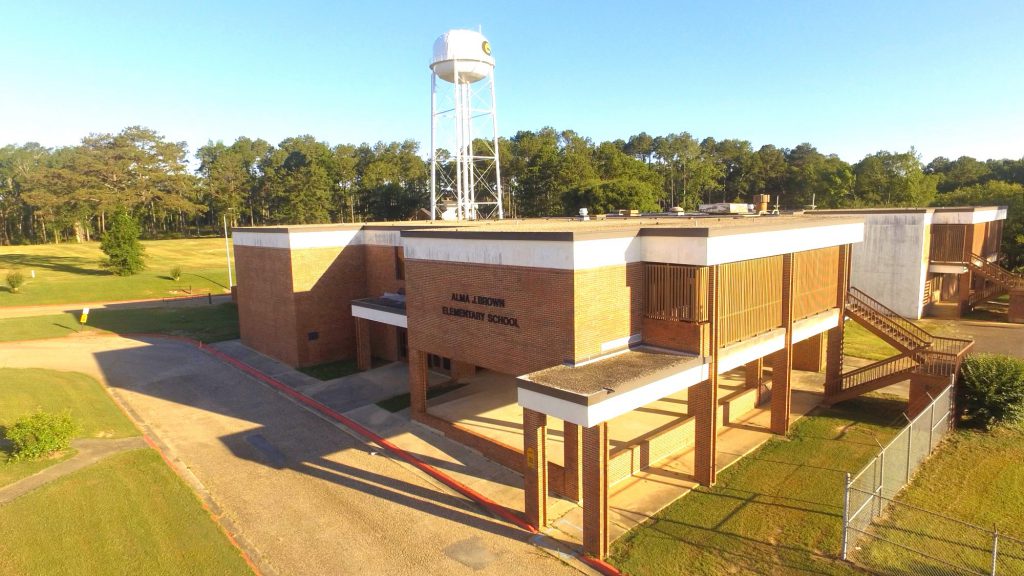
By Caleb Daniel, The Ruston Daily Leader
Grambling State University has been allotted state capital outlay funding for four key facilities projects on campus.
House Bill 2, the state’s construction budget, sets aside some $5.6 million in high-priority funding and another $64 million further down the line for the university to build a new computer science building, renovate an old structure into a new criminal justice building, overhaul the campus’s utility systems and re-roof many buildings.
As of Monday morning, Gov. John Bel Edwards had not yet signed HB2, and while he may make line-item vetoes to the budget, he is not expected to cut higher education.
GSU plans to repurpose the old Alma J. Brown Elementary School building, right across Cole Street from the Nursing Building, and turn it into a new Criminal Justice Building
“Our criminal justice department, which is our campus’s largest program, has been somewhat transient, going from one area to another,” GSU President Richard “Rick” Gallot, Jr. said. “This is an effort to bring that entire department under one roof for the first time in many, many years.”
Gallot said the design work for the building renovations is almost complete, and he hopes construction can begin very soon.
The university has been allocated $ 799,968 in Priority 1 funding for this project, meaning those monies will be in hand this fiscal year. Another $10.5 million in Priority 5 funding has been earmarked for once the project is further along.
The university’s criminal justice department recently added a new doctorate program in criminology and justice administration
A little earlier in the planning process is the university’s anticipated new Computer Science and Cyber Security Building, which was allocated $800,000 from the state for the design phase and a hefty $41 million further down in the line.
In recent years that department has added first-of-their-kind degree programs in cybersecurity and cloud computing. Gallot said the department has outgrown its space and equipment.
“There’s a need to have state-of-the-art facilities to support the great work that’s being done in this area,” he said. “We’re definitely appreciative of the governor and the Legislature appreciating the need for a new facility to house that program.”
Just under $3 million in Priority 1 funds have been earmarked for improvements to campus utilities at GSU, with another $5 million slated to come later.
Gallot, who served in the Legislature from 2000 to 2016, said these utility improvements have their roots as far back as his time in the House of Representatives.
The university’s utility infrastructure is all underground, not overhead.
“So for many, many years, you know — out of sight, out of mind,” Gallot said.
When GSU performed major construction projects to student housing, issues with the aging utility systems were literally unearthed, but beyond an initial assessment, nothing was immediately done.
“When I got started as president, we had issues pop up with our electricity, for instance,” Gallot said. “We’d have a transformer go out and the whole campus would be without power, when it should only be that portion that’s experiencing a surge or whatever the case may be.”
The assessment phase is underway to determine the extent of the issues and prioritize which repairs and upgrades to perform when.
Lastly, GSU is also working on a comprehensive re-roofing project across campus. $1 million has been allocated by the state for that effort in the short term, with another $7.5 million down the line.
A list of university deferred maintenance projects — projects identified as a need but as yet unfunded — provided by the Board of Regents back in the spring lists re-roofing for Charles P. Adams Hall, Woodson Hall, the cafeteria building, the old athletics building, the residence halls, T. H. Harris Hall, the administration building, the old medical building, the old education building and the maintenance building.
In what will be the last budget cycle of Gov. Edwards’ time at the helm, the state was flush with extra revenue as the Legislature debated how to spend it, ultimately voting to bust through the established expenditure limit in order to fund more higher education projects, roads and bridges, and more.

